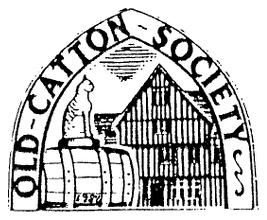Our Society gave a very warm welcome to Geoffrey Caulton to our September meeting. Geoffrey filled in for us at very short notice after The Norfolk Wildlife Trust unfortunately pulled out at short notice. Geoffrey did us proud.
Geoffrey’s presentation of “Flappers” was well received by our members. Several of whom have made comment as to how much they enjoyed the talk. Thank you Geoffrey for coming to rescue us at such short notice. We will welcome him back next February when as the “Photo Detective” he will give us the talk we had originally booked him for.
Geoffrey explained that the “Flappers” was not a word that came from the roaring twenties but was associated to the First World War when teenage girls were liberated from the restrictions of dress expectations and fashion of the Victorian and Edwardian eras. Girls started to wear their long hair in two plaits which flapped about as they walked along. Hence the description “flappers” came into being.
Geoffrey illustrated his talk with many photographs, showing that the Great War changed not only the way women dressed but also the marked change in their role in society. The high necks, long skirts, corseted waist lines and large hats (which also influenced hair styles) became history. Ankles were now seen, lower neck lines and even trousers were being worn. These changes were mainly brought about because of working practices. Prior to the war working class women were mainly in service, middle and upper classes could be governesses. The change the war brought was dramatic. Women were now employed in the Land Army, the Amy, Navy and Air Force. As well as in the police force, in public transport, as munitions workers and were employed by the post office as post women. What a cultural change and remember they still did not have the right to vote!
Margaret White
